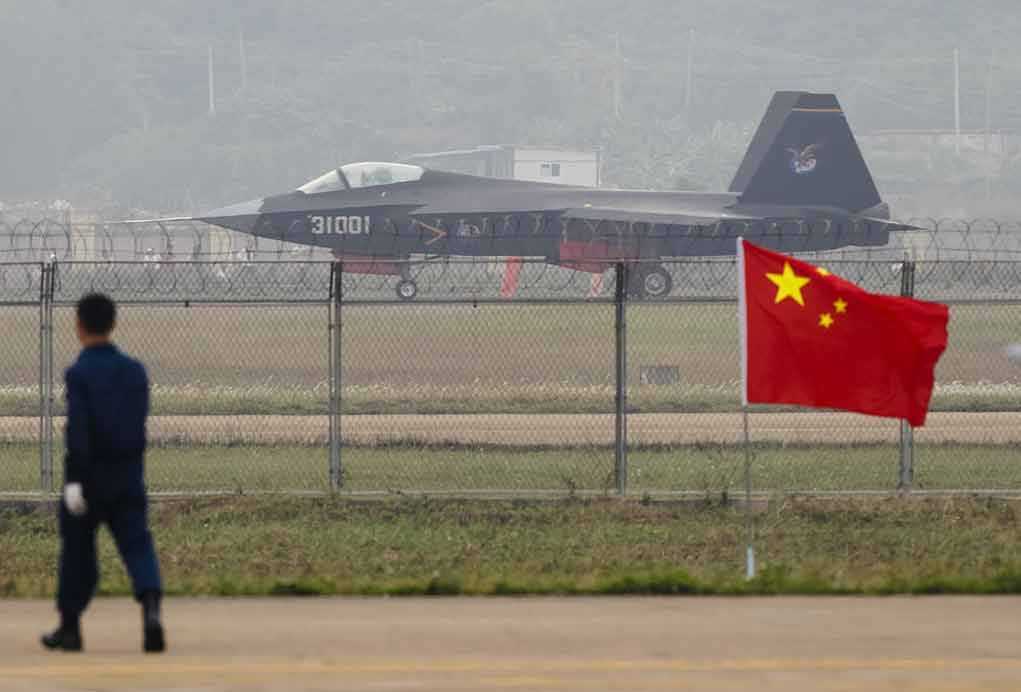
The threat of a Chinese invasion of Taiwan is “no longer distant or theoretical,” warns a former top U.S. military commander as Pentagon strategists race to deter what could become the most dangerous military confrontation of our time.
Key Takeaways
- U.S. Army Pacific Commander General Ronald P. Clark confirms the military is actively working to make a Chinese invasion of Taiwan significantly more challenging
- Former U.S. defense official Charles Flynn warns that preventing the PLA from crossing the Taiwan Strait is the key to deterrence
- China’s military is rapidly advancing its capabilities through technological developments and lessons learned from current global conflicts
- U.S. officials believe Chinese leader Xi Jinping has ordered the PLA to be ready to seize Taiwan by 2027
- The Pentagon is emphasizing joint military operations across branches to counter China’s growing threat to Taiwan
America’s Strategic Challenge in the Taiwan Strait
The U.S. military is implementing increasingly robust strategies to deter China from attempting what would be a catastrophic invasion of Taiwan, according to Army General Ronald P. Clark, commander of U.S. Army Pacific. Speaking at a recent Center for Strategic and International Studies event, Clark outlined how American forces are systematically making any potential Chinese Communist Party invasion across the approximately 80-mile Taiwan Strait significantly more difficult. The general’s comments come amid escalating tensions as China continues aggressive military posturing around what it considers a breakaway province.
“The U.S. military is making a potential Chinese Communist Party (CCP) invasion against Taiwan across the Taiwan Strait more difficult,” said Army Gen. Ronald P. Clark, commander of U.S. Army Pacific.
Former U.S. defense official Charles Flynn has been even more direct about the threat, stating plainly that the possibility of Beijing attempting to seize Taiwan by force can no longer be dismissed as a distant possibility. Flynn, who previously commanded U.S. Army forces in the Pacific region, has outlined the specific steps the People’s Liberation Army would need to execute to launch a successful amphibious assault against Taiwan, while highlighting the substantial challenges such an operation would present to Chinese forces.
China’s Military Advancement and U.S. Deterrence
General Clark emphasized that China is rapidly advancing its military capabilities through a combination of technological innovations and practical learning from ongoing global conflicts. The PLA has been closely studying modern warfare, including Russia’s invasion of Ukraine and conflicts in the Middle East, to enhance its joint operations capabilities. This knowledge acquisition, coupled with China’s massive military modernization program, presents an evolving challenge that requires constant adaptation from U.S. defense planners concerned with protecting Taiwan’s sovereignty.
“If the PLA Army cannot land, cannot maneuver, cannot hold ground, and cannot subjugate the people of Taiwan, it cannot win. If we can prevent them from even attempting to cross, we deter the war altogether,” said Charles Flynn, former commander of U.S. Army Pacific.
U.S. intelligence assessments indicate that Chinese leader Xi Jinping has directed the PLA to develop the capability to successfully invade Taiwan by 2027, creating urgency within American defense circles. Pentagon strategists recognize that any Chinese assault would need to overcome significant obstacles – including crossing the treacherous Taiwan Strait under fire and then engaging in potentially brutal urban warfare against Taiwan’s well-prepared defensive forces. The U.S. military’s focus remains on making these already difficult challenges appear insurmountable to Chinese military planners.
Strategic Importance and Joint Operations
Beyond purely military considerations, U.S. officials have emphasized Taiwan’s critical strategic importance to American interests. Former Deputy Secretary of State Kurt Campbell has articulated that Taiwan’s future is directly intertwined with America’s own security and prosperity. This assessment underscores why the Pentagon continues to prioritize the development of deterrence capabilities specifically tailored to preventing conflict across the Taiwan Strait, even as other global hotspots compete for military resources and attention from Washington.
“Taiwan’s future is deeply intertwined with America’s own—our economies, technologies, and societies are inextricably linked—making a strong and secure Taiwan a vital U.S. strategic interest,” said Kurt Campbell, former Deputy Secretary of State.
General Clark highlighted that the U.S. military is focusing on joint operations that integrate capabilities across the Army, Navy, Air Force, and Marine Corps to create a more formidable deterrent. This approach recognizes that effectively countering a Chinese invasion would require seamless coordination between American military branches – something the Pentagon continues to refine through regular exercises with allies in the Indo-Pacific region. By demonstrating this integrated capability, military leaders hope to convince Beijing that the costs of any attempted invasion would far outweigh potential benefits.
The Challenge of Strategic Ambiguity
While the U.S. maintains its longstanding policy of “strategic ambiguity” regarding exactly how it would respond to a Chinese attack on Taiwan, the continuous enhancement of American military capabilities in the region sends a clear message to Beijing. Military experts note that this policy walks a delicate line – providing enough uncertainty to deter Chinese aggression while avoiding provocations that could accelerate conflict. For General Clark and his counterparts across the U.S. military, the focus remains squarely on creating multiple layers of deterrence that make crossing the Taiwan Strait an unacceptable risk for Chinese forces.
“The threat of a Chinese invasion of Taiwan is no longer distant or theoretical,” said Charles Flynn, former commander of U.S. Army Pacific.
As tensions continue to simmer in the Taiwan Strait, American military leaders remain committed to their strategy of making any potential Chinese invasion appear increasingly difficult, costly, and ultimately futile. Through enhanced joint capabilities, strategic deployments, and continuous adaptation to China’s evolving military threat, General Clark and his colleagues are executing a carefully calibrated approach designed to maintain peace through strength and preparedness rather than provocation. The success of this strategy may determine whether the Taiwan Strait remains a flashpoint or a boundary that preserves regional stability.












